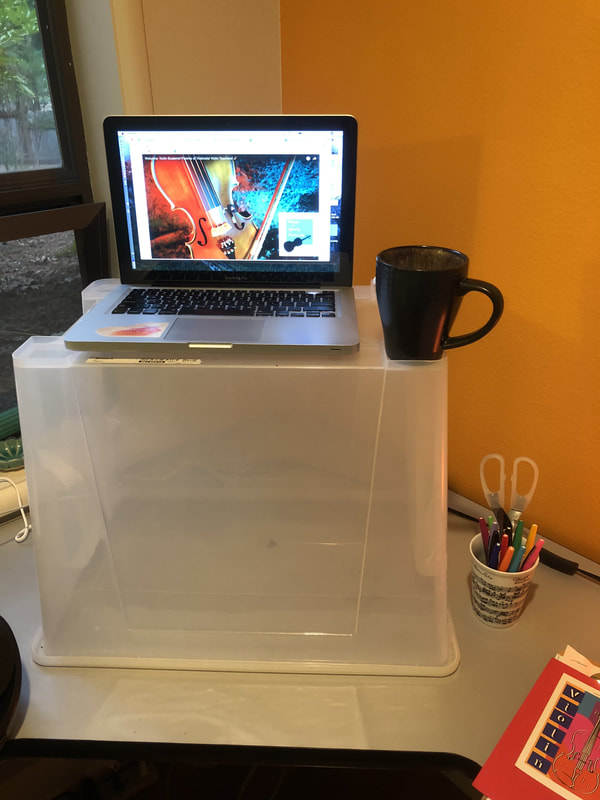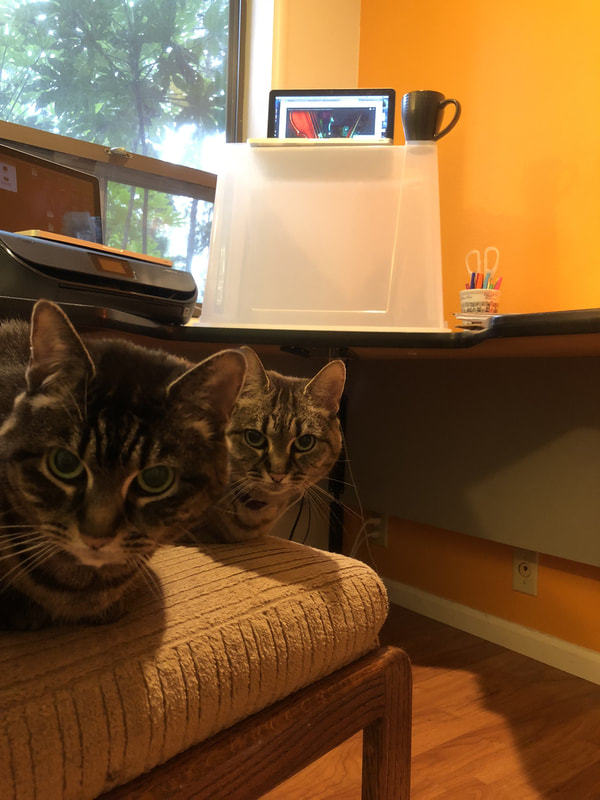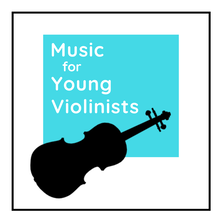Who wrote Twinkle?For decades, I thought this clever tune was composed by W. A. Mozart until a colleague enlightened me. Enjoy this delightful re-post by guest author Murray Charters from 2015. By Murray Charters (B. Mus., M.A.) Cellist and Teacher, Kitchener, Ontario Wolfgang Amadeus Mozart (1756-91) holds great appeal to teachers and students of the Suzuki method. There are pictures of the young boy playing the harpsichord with his older sister, Nannerl, and we know much about the strong guiding hand of his father, Leopold, in his music education. They were already a Suzuki family! Wouldn’t it be nice to connect clever young Mozart with the most famous tune in Suzuki literature? Wolfgang Amadeus Mozart (1756-91) holds great appeal to teachers and students of the Suzuki method. There are pictures of the young boy playing the harpsichord with his older sister, Nannerl, and we know much about the strong guiding hand of his father, Leopold, in his music education. They were already a Suzuki family! Wouldn’t it be nice to connect clever young Mozart with the most famous tune in Suzuki literature? Nannerl recorded that her brother started composing simple keyboard pieces around age 5, and his first symphony at age 8. By that time he had already travelled to many of the important cities of Europe and actually wrote that first symphony to pass the time while his father recovered from a cold when they were in England. On the way to England they had stopped in Paris where a collection of folk songs had been published just a few years earlier, in 1761. That collection included a very attractive little song, without lyrics, said to have been created in the then popular pastoral style some 20 years earlier by author or authors unknown. This tune proved so appealing that it was published again in Paris in 1774, this time with lyrics of a rather sophisticated nature added. "Ah! vous dirai-je, Maman" is the first line of an anonymous love poem of the time. Of course it’s about love; it’s French isn’t it? “Oh! Shall I tell you, Mother / What is tormenting me?” the poem begins, and goes on to exclaim: “Can anyone live without love?” These lyrics speak of teenage angst rather than nursery rhyme cuteness, but that was soon to change. In 1806 a young English poet, Jane Taylor, published a six-stanza poem called The Star in a book of Rhymes for the Nursery. Whether intended or not, Taylor’s poem fit very nicely onto this French folk song. In fact, others must have thought so too and her words were eventually printed together with that music in an 1838 song book. And thus it was that what we now know as “Twinkle, twinkle, little star” finally made its first appearance on the world’s stage in that form in the second year of the reign of Queen Victoria. So how did we come to associate this well-known English nursery rhyme and French folk song with Mozart, especially in Suzuki circles? Because both he and Dr. Suzuki knew a good melody when they heard it. Mozart wrote a splendid set of keyboard variations on this tune around 1781 or 82. But he called it “Ah! Vous dirai-je, maman” which shows he knew the melody only after its French publication of 1774. He certainly wasn’t the only composer attracted to all the possibilities for variation offered by this simple but elegant tune. Johann Christoph Friedrich Bach, 9th son of J.S., did the same thing around the same time, and there have been other sets written since, but none by composers with names of the musical appeal of Mozart. (I particularly recommend the Variations on a Nursery Tune for piano and orchestra by Ernst von Dohnanyi, perhaps because of its subtitle: For the enjoyment of humorous people and for the annoyance of others.) I’m sure these musicians saw the same things in this melody that we all point out to our eager music students. Its immediately innocent nature using just six notes of the scale, a very simple rhythm pattern, and much repetition belies a more sophisticated emotional tone set by the refusal of the middle section to return to the tonic. Of course this charming melody is also absolutely ideal for creating good posture for little left hands on bowed stringed instruments, and we should all praise Dr. Suzuki for using it so cleverly at the beginning of his method. Just don’t say it was written by Mozart. A very special thanks to Murray's Music for contributing this article to the Music for Young Violinists Project!
3 Comments
Hello from Oregon! I thought it would be fun to show you a peek from behind the scenes. I love working on this project 1st thing in the morning when the rest of the house is asleep. I have an old computer that is holding on for dear life and I only turn it on when I must retrieve a specific file so that is why they are both out today. Usually, I just have my single laptop open. I made a DIY stand-up desk from a storage crate from IKEA for about $8 (vs. the $200+ fancy ones available elsewhere). My coffee cup fits perfectly in these built-in sections. I got on the stand-up desk craze a couple of years ago for health benefits but as you can see, my cats totally take over my chair anytime I leave the room so the whole situation keeps them happy and me a little healthier. Today's to-do list:
+ Cook lunch, clean the kitchen, do some laundry, call my sister who just had a baby, exercise, walk the dog, go to the post-office to mail my mother's birthday present, write thank you notes for a prize I recently won (that is where my new speakers from), a little violin practice (open strings mostly) and do a bit of physical therapy for my back and arm........ OK, that is a small snippet of what goes into Music for Young Violinists. I gave myself until the end of August to work on this until my heart's desire but have to shift gears and review Pathophysiology and Pharmacology beginning September 1. Bye for now, Heather Music is not something you do, it's a place you go. No one is immune to the human experience. All of us will have challenges and pain and music is a prescription for a healthy escape from the gravity of life. Music creates a space that allows for us to recharge, regroup and reflect in a manner that builds us up instead of depleting us. Music heals. I work with a group of Suzuki Violin teachers in my city (Eugene, Oregon) to create events for our students. Sunday, June 12, 2016 was our first event of the summer: a review party for our more advanced students with an ice cream bar afterwards. To say we were excited to host this party for our students was an understatement but when I woke up that morning to the indescribable horror of yet another mass shooting in our country the last thing I wanted to do was put on my happy face and assume my public role as a teacher in my community. I wanted to lay in bed, follow the unfolding news story and grieve the loss of innocent life while venting the anger that comes from the continuity of these shootings and injustices.
I am not qualified to speak on the politics and social issues that surround the circumstances of the Orlando shooting but I can share my personal experience with how music played a vital role in my life that day and I hope also for the students involved. When the time came to meet for our Suzuki Violin review party, I left half heartedly with the shooting on the front of my mind. As soon as I arrived at our location I was able to mentally “change channels” and enter into the world of music. I played along that day more than someone with an overuse injury like me would normally plan to do. In that hour of playing the violin, playing J.S. Bach, playing with colleagues & playing with students something transformative happened. Inside the music I was able to forget about the tragic events and elevate above the pain, anger and confusion that is part of our human experience and was provoked by the senseless shooting in Orlando that morning. It was not appropriate to bring up the tragic event with the students but inevitably some of them were aware of this recent unprecedented news story. I am confident that the music - in the form of playing the violin, playing masterworks by great composers, playing in unison with friends and playing with trusted teachers also provided a safe space for these young musicians to unconsciously process the events and was a reprieve from the gravity of this reality that is becoming all too regular in our country. Music fills many voids in our life and can provide a safe space for unconscious introspection in times like this.
Hello M4YV Peeps,
It is my week off for Spring Break and has been an absolute constant rainstorm here in Oregon. This means I have time off & time inside to have too much fun with my MacBook photobooth feature and I have gone nuts restocking the FREEBIES page. Head on over to the FREEBIES page & enjoy some awesome new downloads to help you bring out the best in your teaching. I rotate my FREEBIES on a regular basis so many of these resources will not be up for long. Happy music making! Heather
I have a magic bag. When I put something in this “magical” bag it makes the object grow into a larger version of itself. For example, if I put a miniature notebook into the magic bag, I get back a large notebook. I started this trick in my teaching to help with review of the *Blue Jello (set 1) rhythm cards. I wanted to fortify this foundation of fundamental rhythms before we learned the second set of this rhythm card series. The Blue Jello (set 1) cards happen to come in both a small and large size which naturally led to this playful idea. This simple trick for reviewing first year material turned into a very captivating way to begin a class and my students never even realized we were doing review.
As the school year went on I realized that the magic bag was more than a way to enchant my students into doing review and actually a metaphor for the learning process. When we come to class our knowledge is small and when we leave class it is bigger - this is the wonder of the learning process. As I realized this parallel I began to state it to my young students so they could be aware that they were growing and be able to feel empowered by this incredible process. I believe that learning and the growth that occurs along the way is one of the most satisfying experiences we can possibly have in this world. The magic bag helps us conceptualize the true magic of the learning process while having fun along the way. I also did this intentionally to plant in my young students an identity of being a learner and a student. If you have not already read the book The Talent Code by D. Coyle, I highly recommend it for several reasons. One of the reasons I recommend this book for educators and parents is to learn about the incredible studies that have been done correlating identity to success. In the video below I first share a brief view of how the magic bag works, the concepts and reasons behind it and then a clip of me using my magic bag in the classroom. In this video I reference the importance of mindsets - for more information on this I recommend Sal Khan's article The Learning Myth: Why I'll Never Tell My Son He's Smart. I also reference the power of identity - for more information about this and to learn of some compelling studies involving learning and identity I recommend reading D. Coyle's book The Talent Code. * To learn more about Blue Jello Cards rhythm cards and the Music Mind Games music theory curriculum click HERE. LARGE PRINT Music for Beginning Violin is a 21 page digital download that includes 17 popular folk tunes and 3 beginner level scales.
This is the perfect collection for the young violinist (aged 4-7) who is just beginning to learn how to read music. The large music font makes it easy to see notes and was formatted for plenty of room to write in. Once purchased, teachers and parents can print out as many copies as they like for multiple educational uses. As a teacher myself I know that I sometimes want to revisit pieces and write in pitches or fingerings. I also love using color with my students and having multiple use copies with this digital download format gives me versatility and creativity in my teaching. The scales and beginner level pieces included in this collection were chosen because they complement the foundational skill set established for a student who is at the Suzuki Violin Book 1 level but are also appropriate for any young beginner. I owe a special thanks to my precious young violinists over the years who have taught me what pieces light them up and keep them invested and working hard. Popular tunes like Jingle Bells, Happy Birthday and the Itsy Bitsy Spider Song are pure violin teaching gold for teachers working with young students. Happy Music Making! |
Categories
All
Archives
February 2024
AuthorHi! It's me, Heather. I absolutely love working on the Music for Young Violinists project and all the many facets: blogging, website, music, teaching materials, freebies, videos, newsletter and giveaway contests. The best part is connecting with you so feel free to drop me a line. You can learn more about me on the "ABOUT" page. Thanks! |











 RSS Feed
RSS Feed
